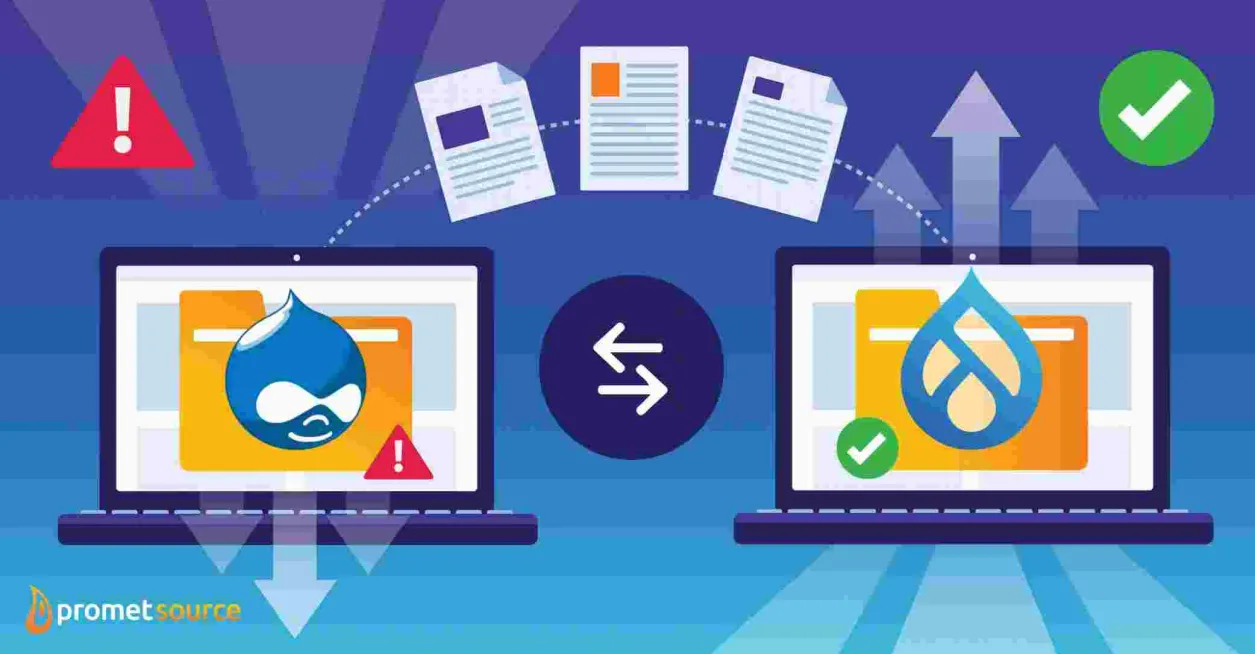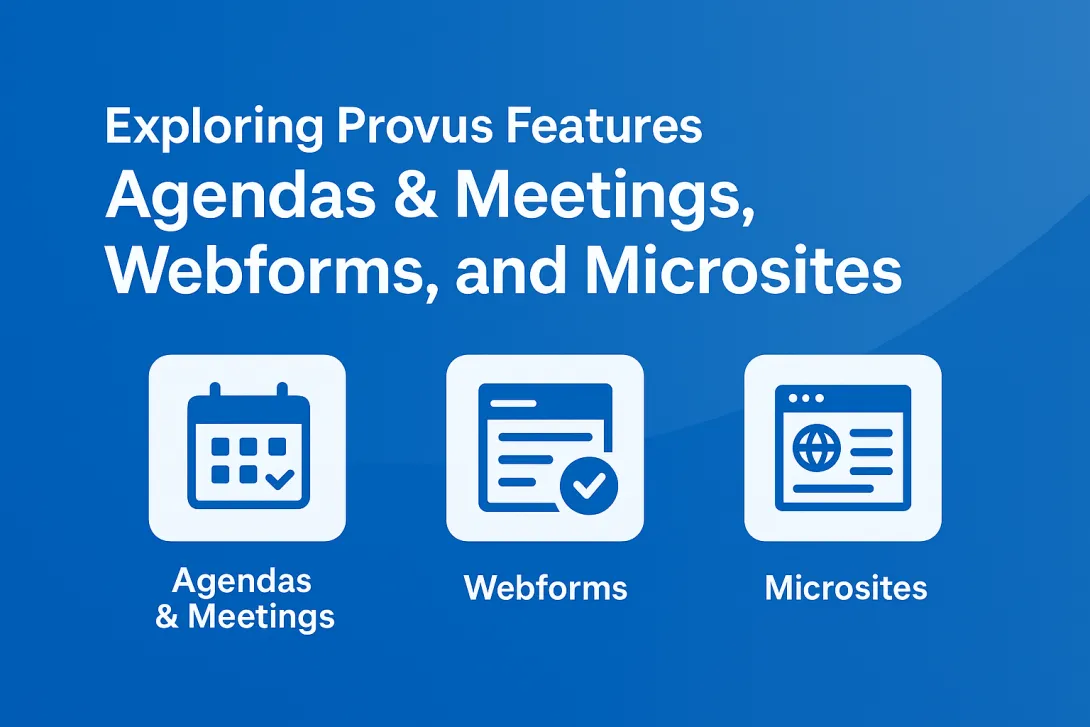Why Your Website Needs a Drupal 7 Migration ASAP

Table of Contents
Takeaway: Organizations still using Drupal 7 must urgently plan for a Drupal 7 migration to Drupal 10 before the end-of-life date on January 5, 2025, to avoid security risks and loss of support. As community support for Drupal 7 wanes and security patches cease, the risks for outdated sites increase significantly. While migrating to Drupal 10 can be complex, the benefits—such as improved performance, enhanced mobile responsiveness, better content editing, and stronger security—make the upgrade essential.
LEAVE LEGACY TECH BEHIND—Get a Free Drupal Migration Consultation
On a 1-10, how important is your website?
That’s a question we sometimes ask clients or people we meet at Drupal events.
It’s a rhetorical question, of course. The answer is always at least “10.”
There’s rarely any need to expound upon the pivotal role that websites play in the current climate.
For higher education, websites represent make-or-break first, second, and third impressions.
County and municipal government websites now function as a virtual town square—the place for taking care of official business, showcasing major attractions, appealing to tourists, supporting business, and a whole host of other functions.
For enterprises and non-profits, the required heavy lifting runs equally deep and wide
That’s why many of us in the Drupal community are puzzled about the significant percentage of Drupal sites that are still on Drupal 7.
Is legacy technology up to the task?
If you are reading this blog, chances are that you get it: Drupal 7 is legacy technology. For others in your organization, though, who don’t know the chasm that exists between Drupal 7 and the possibilities inherent in Drupal 10, a Drupal 7 site might seem just fine.
We can (and will) cover the big differences between Drupal 7 and 10, but first, for the sake of perspective, let’s look back 14 years to some of the technologies that were exciting and considered leading edge in 2011—the year that Drupal 7 was released.
- The iPhone 4s, which represented a significant advancement over previous models, was unveiled on October 4, 2011.
- That same year, the BlackBerry Bold 9900 became quite coveted for its physical keyboard and secure messaging capabilities.
- Samsung Galaxy S2 was the flagship Android smartphone in 2011.
- The Nintendo 3DS handheld gaming console featured autostereoscopic 3D technology and was viewed as innovative in 2011.
- Sony Walkman MP3 Players were still popular in 2011.
Kicking off a year of exciting technological advances, Drupal 7 was released on January 5, 2011, and gained popularity for its flexibility and extensive contributed module ecosystem.
Unlike subsequent versions of the CMS, Drupal 7 was accessible to hobbyists and small website owners. Drupal 8 marked a new evolutionary trajectory – away from hobbyist-friendly and toward a uniquely enterprise-ready CMS, distinctly suited for ambitious sites with complex content models.
LEAVE LEGACY TECH BEHIND—Get a Free Drupal Migration Consultation
Impending Drupal 7 end-of-life
Drupal 7 was originally slated for end-of-life in 2021—6 years after the 2015 release of Drupal 8. That first end-of-life date was initially extended by one year in the midst of upheavals and uncertainties surrounding a global pandemic.
As the Drupal community migrations to Drupal 8 and then Drupal 9 proved to be more of a trickle than the required surge, the end-of-life date was extended again to 2023. A final Drupal 7 end-of-life date of January 5, 2025, was announced in June of 2023 at DrupalCon Pittsburgh.
To review: End of life means no more bug fixes or security patches, along with an increased risk of faulty modules.

A drop-off in Drupal 7 community support
It’s critical for anyone who is still on a Drupal 7 site to realize that even though the official end-of-life date is not until 2025, community support is already on the decline.
The Drupal Association announced that effective August 1, 2023, the Drupal Security Team may choose to not publicly post in the public issue queue for resolution the moderately critical and less critical issues affecting Drupal 7.
When a security issue affects both Drupal 7 and Drupal 10, the Drupal 10 security advisory may be released without a corresponding Drupal 7 fix.
Additionally:
- Drupal 7 branches of unsupported modules and themes are no longer eligible for new maintainership.
- The Drupal security team will not issue security advisories for any unsupported libraries that Drupal 7 contributed modules or themes rely on, such as CKEditor 4.
- PHP 5.5 and below will no longer be supported on Drupal 7.
- Security fixes will no longer be provided for Drupal 7 Windows-only issues. Anyone running a Drupal 7 site on Windows is advised to look into migrating to another operating system for hosting.
Why are so many websites still on Drupal 7?
There’s no denying that Drupal migration services can be a big lift, consuming budget and resources. An ROI analysis does not need to dig exceptionally deep, however, to conclude that upgrading to a more scalable, secure, efficient, and feature-rich web platform is worth the investment many times over.
Multiple factors determine the actual cost of a Drupal 7 to 10 migration. Migrating a simple brochure site with a few pages and basic functionality can be a simple and streamlined process. The degree of customization and complex data structures will considerably compound the cost.
For a detailed breakdown and estimator, head to our Drupal migration cost guide.
It’s been our experience that the biggest barrier to migration from Drupal 7 is simply a lack of understanding concerning the speed, usability, power, and potential of Drupal 10.
This lack of understanding, combined with inertia, can fuel an "if it's not broken, don't fix it" level of complacency for Drupal 7 sites that have not experienced major issues.
The business case for Drupal 10
Drupal 10 represents a significant improvement over Drupal 7 in numerous ways that directly impact your organization's digital effectiveness, which is why we recommend Drupal 10 for government:
- Improved Security: Drupal 10's modern codebase includes advanced security features and regular updates that protect your site from emerging threats
- Better Performance: Faster page loads, better caching, and optimized code mean your users experience a more responsive website
- Mobile-First Design: With more than half of all web traffic now coming from mobile devices, Drupal 10's mobile responsiveness is no longer optional
- Intuitive Content Management: The Layout Builder and improved editor experience empower your team to create and update content without technical assistance
- Future-Proofing: Automatic updates are on the roadmap, ensuring your site stays secure with minimal maintenance overhead
The latest stats show that 47.5% of all Drupal sites are still on Drupal 7. Many Drupal 7 users are hobbyists or small businesses. If you are still on Drupal 7, you are not alone. But if you agree that your website is a mission-critical digital property and that remaining on Drupal 7 beyond the end of life is a sub-optimal option, it's time to act.
For a design-first rethink of your site, see A Transformative Approach to Drupal Migration.
LEAVE LEGACY TECH BEHIND—Get a Free Drupal Migration Consultation
Get our newsletter
Get weekly Drupal and AI technology advancement news, pro tips, ideas, insights, and more.





